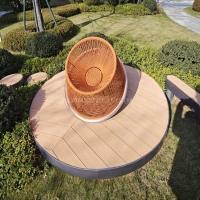Welcome to the website for landscape facilities products and knowledge.
How does the bin’s design accommodate waste collection in healthcare facilities?
In healthcare facilities, effective waste management is critical to maintaining hygiene and preventing infections. The design of bins plays a pivotal role in ensuring safe and efficient waste collection. Here’s how specialized bin designs accommodate waste disposal in medical environments:
1. Segregation for Safety: Healthcare bins are often color-coded and labeled to separate hazardous waste (e.g., sharps, biohazard materials) from general waste. This minimizes cross-contamination and ensures compliance with regulatory standards.
2. Foot-Pedal Operation: Many medical bins feature hands-free operation via foot pedals, reducing contact with contaminated surfaces and lowering infection risks for staff and patients.
3. Leak-Proof and Durable Materials: Bins are constructed from high-density polyethylene or stainless steel to withstand corrosive substances and prevent leaks, ensuring safe containment of medical waste.
4. Secure Lid Mechanisms: Tight-sealing lids prevent odors, spills, and unauthorized access, crucial for hazardous or pharmaceutical waste.
5. Ergonomic Design: Bins are sized and shaped for easy placement in high-traffic areas like patient rooms or operating theaters, optimizing workflow without obstructing movement.
By integrating these features, healthcare bins streamline waste collection while upholding stringent infection control protocols, ultimately safeguarding both staff and patients.
Related search:

Recommendation
Swivel chair-Specialty steel structure woven rattan leisure chair with rotatable design